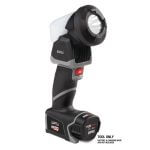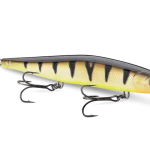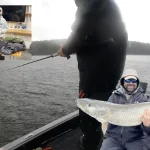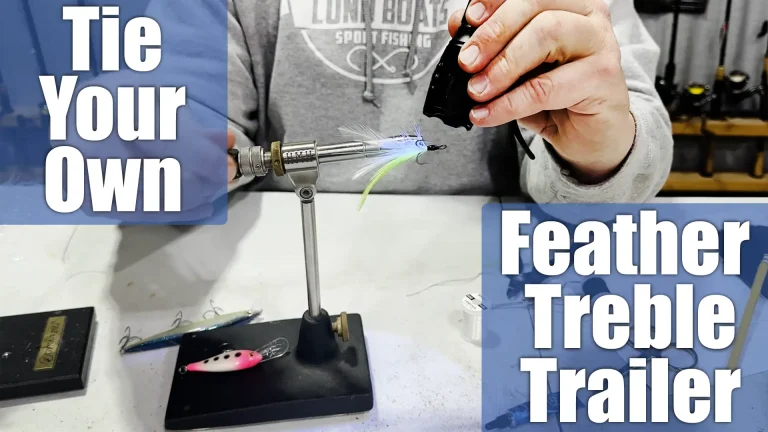James Lindner and Jeff Simpson go bass finesse fishing for smallmouth bass in mid to deeper-water summer haunts. Understanding the mood and nature of smallmouth bass is important, as these tips can be applied anywhere in North America. The population and individual sizes of these fish have really evolved over the past two decades. Smaller finesse bait presentations like a drop shot, tube, ned rig or swimbait are some excellent choices throughout the season. Big Bite Baits offers a variety of different shapes, sizes and color patterns that apply to those rigs and jigs. The importance of scent in finesse fishing, especially when dealing with sight feeders like smallmouth bass is something to consider. Comment below if you have questions and subscribe for more videos to help you catch more and bigger fish.
Smallmouth bass fishing is a thrilling and rewarding experience for anglers. Whether you’re a seasoned pro or just starting out, understanding the nature of smallmouth bass and using finesse fishing techniques can greatly improve your success on the water. In this article, we’ll explore the best baits for smallmouth bass and how finesse fishing can help you catch more of these feisty fish.
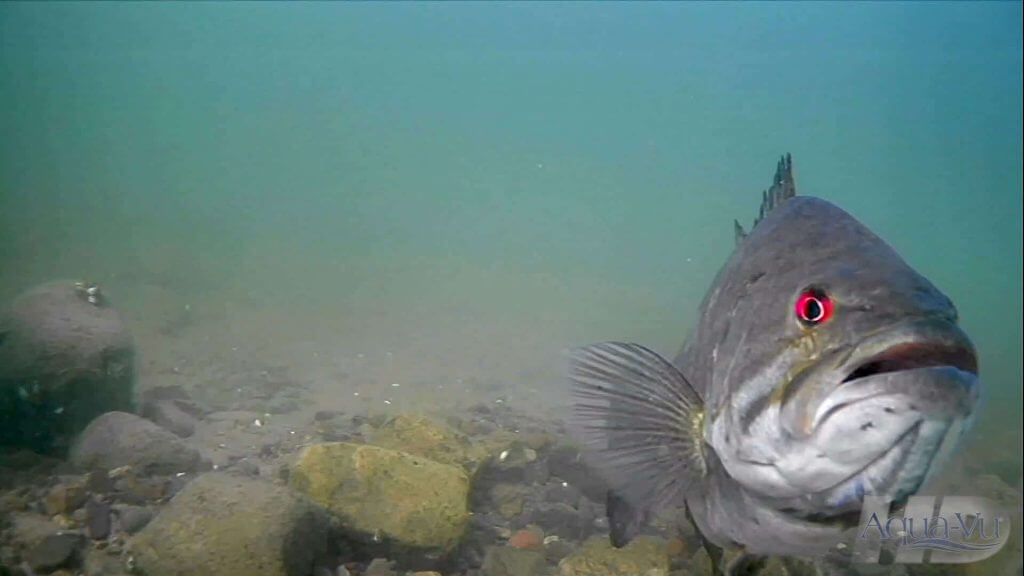
The Rise of Smallmouth Bass
Over the past 20 years, the smallmouth bass population has grown and expanded across the country. Not only have the populations gotten larger, but the fish are also getting bigger. In the past, a 4 lb smallmouth bass was considered a trophy catch. Now, anglers are catching 6, 7, and even 8 lb smallmouth bass. It’s truly amazing to see how these fish have flourished.
Finesse Fishing for Smallmouth Bass
Finesse fishing is a technique that involves using smaller, more subtle baits and presentations to entice smallmouth bass to bite. This is especially effective during the midsummer months when the fish are often found in deep water structures. By understanding the nature of smallmouth bass and their feeding habits, anglers can become more proficient at finesse fishing and increase their chances of catching these prized fish.
One popular finesse bait for smallmouth bass is the tube bait. These baits mimic small baitfish or crayfish and can be rigged on a jighead or used with a drop shot rig. Another effective finesse bait is the Somali worm, which is a small, scented bait that can be used with a drop shot rig. The scent of the bait can make a big difference in enticing smallmouth bass to bite, as they are known to be sight feeders and rely on their sense of smell to locate prey.
When finesse fishing for smallmouth bass, it’s important to experiment with different baits and presentations. Fish will often show a preference for one finesse bait over another, so it’s a good idea to have a variety of options in your tackle box. By staying observant and paying attention to the fish’s behavior, you can adjust your tactics accordingly and increase your chances of success.
The Role of Electronics
In recent years, forward-facing sonar technology has revolutionized angling. Anglers can now use devices like the Mega Live to see fish and underwater structures in real-time. This technology has become dominant in tournaments across North America, including those targeting smallmouth bass. By using forward-facing sonar, anglers can locate fish-holding structures such as boulder piles, ledges, and high spots, and target smallmouth bass more effectively.
In recent years, forward-facing sonar technology has revolutionized angling. Anglers can now use devices like the Mega Live to see fish and underwater structures in real-time. This technology has become dominant in tournaments across North America, including those targeting smallmouth bass. By using forward-facing sonar, anglers can locate fish-holding structures such as boulder piles, ledges, and high spots, and target smallmouth bass more effectively. Moreover, finesse fishing for smallmouth bass involves a nuanced approach that goes beyond just technology. It’s crucial to recognize that fish behavior plays a significant role in determining success on the water. Fish often exhibit preferences for specific finesse baits and presentations, requiring anglers to be observant and adaptable. By understanding the intricacies of fish behavior and adjusting tactics accordingly, anglers can increase their chances of success when finesse fishing for smallmouth bass. This adaptability and attention to detail are key elements in finesse fishing, allowing anglers to optimize their approach and outsmart even the most elusive fish.
Fishing Tips and Techniques
When targeting smallmouth bass, it’s important to do your homework and familiarize yourself with the body of water you’ll be fishing. Use your electronics to locate potential fish-holding structures and mark them on your GPS. Look for areas with rocky structures, boulder piles, ledges, and high spots, as these are often prime locations for smallmouth bass.
Once you’ve identified potential fishing spots, finesse fishing techniques can be highly effective. Start by using smaller, more subtle baits like tube baits or Somali worms. These baits mimic the natural prey of smallmouth bass and can entice them to bite. Rig them on a jighead or use them with a drop shot rig for optimal presentation.
When finesse fishing, it’s important to pay attention to the fish’s behavior. They may show a preference for one bait over another, so be prepared to switch things up if needed. Experiment with different colors, sizes, and presentations to see what works best on a given day.
Another important aspect of successful smallmouth bass fishing is understanding their feeding habits. Smallmouth bass are known to be sight feeders, but they also rely on their sense of smell to locate prey. This is where scented baits like the Somali worm can make a big difference. The scent can attract smallmouth bass and trigger them to bite, even when they’re not actively feeding.
Using forward-facing sonar technology, like the Mega Live, can greatly enhance your fishing experience. This technology allows you to see fish and underwater structures in real-time, giving you a clear advantage in locating smallmouth bass. Look for fish-holding structures like boulder piles and ledges, and target those areas for the best chances of success.
Finesse fishing, often misinterpreted as solely using spinning rods, lighter lines, and smaller lures, encompasses a broader approach beyond these conventional notions. It involves adapting finesse techniques to various types of lures typically associated with power fishing, such as crankbaits, spinnerbaits, and jerkbaits. This adaptability enables anglers to employ finesse strategies even with larger, more aggressive lures. For instance, finesse fishing can involve using heavier lines and larger sinkers on techniques like drop shots, challenging the traditional finesse gear setup. Furthermore, finesse fishing is not restricted to deep waters; it can be effectively applied in shallower depths, as shallow as 2 feet, showcasing the versatility and applicability of finesse techniques across diverse fishing scenarios.
In conclusion, finesse fishing for smallmouth bass can be a highly rewarding experience. By using smaller, more subtle baits and paying attention to the fish’s behavior, you can increase your chances of catching these feisty fish. Don’t forget to do your homework and use your electronics to locate potential fishing spots. With the right techniques and a little bit of luck, you’ll be reeling in big brownies in no time.
Is finesse fishing limited to specific gear or water depths?
Finesse fishing is not limited to specific gear or water depths. Anglers can finesse fish using various types of gear and can target bass in shallow as well as deep waters.
Can finesse fishing involve using larger lures typically associated with power fishing techniques?
Yes, finesse fishing can involve using larger lures such as crankbaits, spinnerbaits, and jerkbaits, which are traditionally associated with power fishing techniques.
How is finesse fishing misunderstood in bass fishing?
Finesse fishing is considered one of the most misunderstood techniques in bass fishing due to misconceptions about its limitations and the types of lures that can be used.
What is finesse fishing in bass fishing?
Finesse fishing in bass fishing involves using spinning rods, lighter lines, and smaller lures. However, it goes beyond just these characteristics.
How can exclusive finesse tackle be stored for quick access and versatility in different fishing conditions?
Exclusive finesse tackle can be stored in a ‘Panic Box’ for quick access and versatility in different fishing conditions, providing anglers with easy access to their specialized gear when finesse fishing.
What are the recommended lure colors for finesse fishing?
When finesse fishing, it is advised to avoid bright colors and opt for more natural shades. In muddy water, black lures are suggested for better visibility to the fish.
What are the recommended lure weights for finesse fishing?
Lures weighing between 1/16 and 1/4 ounce are recommended for finesse fishing to ensure the proper presentation to entice fish.
What are the preferred rod types for finesse fishing and why?
The preferred rod types for finesse fishing are 6- to 7-foot light action spinning rods, matched with open face spinning reels for fish control with lighter lines.
What are the recommended line weights for finesse fishing in different fishing conditions?
For finesse fishing, it is recommended to use 8-pound fluorocarbon as the first choice, dropping to 6-pound in clear or deep water, and going up to 10-pound around cover.



